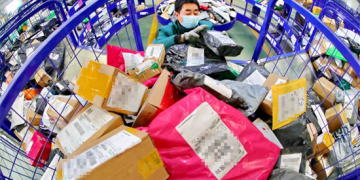China Daily
The global economy has shifted into a lower gear as geopolitical tensions, tighter monetary policy, led by the US Federal Reserve, and a slowdown in China combine to weigh on growth. In our base case, global GDP growth moderates to 2.8 percent in 2022 but we think that these three factors could continue to weigh on growth and even trigger a global recession.
In Asia, the effects of this slowdown in global growth so far are best exemplified by real export growth, which softened to 1 percent year-over-year in March from 7 percent last September.
As global growth moderates, we are no longer in an environment where a rising tide lifts all boats. It has therefore become incumbent on Asian economies to generate growth domestically.
Fortunately, with most large Asian economies in the mid-cycle stage of recovery, there is plenty of room for them to generate domestic demand. We expect domestic demand to rebound in much of Asia from the second quarter of this year, with China joining in later this year.
In China, policymakers are already easing on all other fronts as it relates to monetary, fiscal, housing, decarbonization and big-tech regulation, and are likely to ease further in the coming months. We anticipate that wide-scale implementation of regular testing will help unlock a gradual recovery and the gradual transition in COVID-19 management will turn the recovery into a full-fledged one in the fourth quarter of this year.
Although April turned out to be the worst month for economic performance since the onset of the pandemic, we are seeing signs of the situation improving, albeit sluggishly. Indeed, with 29 cities (18 percent of GDP and 15 percent of the population) still under some form of strict pandemic prevention and control measures, this will constrain growth in May despite the easing efforts of the policymakers.
To unlock a gradual recovery, we think the implementation of regular testing will allow more cities to reopen. This approach involves individuals having to present a negative nucleic acid test (valid for 48 hours) to enter public venues. This is already the case in Shenzhen as well as 20 other cities accounting for about a quarter of the population.
Policymakers have urged local governments to set up testing sites that are within a 15-minute walk to facilitate regular testing. Assuming 70 percent of the population is tested every three days, we estimate that this approach could cost 0.4 percent to 0.7 percent of GDP over the next six months. As this approach is scaled up, it will provide policymakers with an early detection tool and mitigate the risk of city-wide lockdowns, helping lift economic activity from currently depressed levels.
However, to unlock a full recovery, we think an approach of high vaccination and booster shot rates is needed. Currently, just 62 percent of people above 60 years of age have received their booster shot. Based on the current pace, we estimate that it will take until October or early November to reach the 80 percent mark. It is in this context that we think a transition appears likely in the fourth quarter of this year. Against that backdrop, we believe there will be a boost to private sector confidence, which will improve the effectiveness of policy easing, thereby helping drive a full-fledged recovery.





